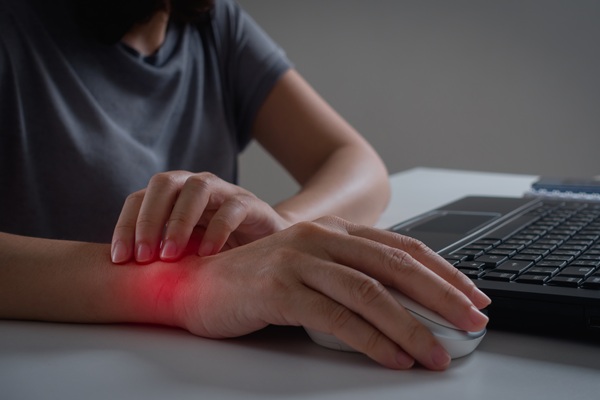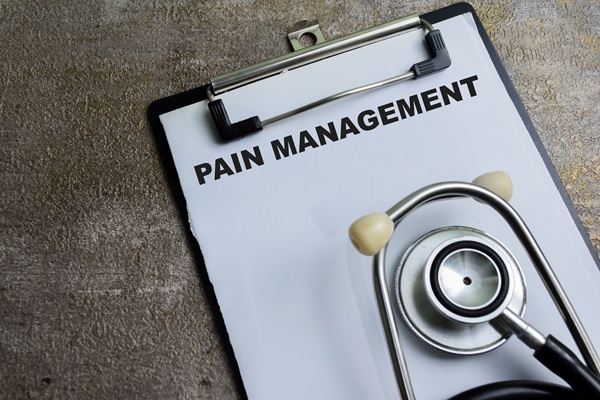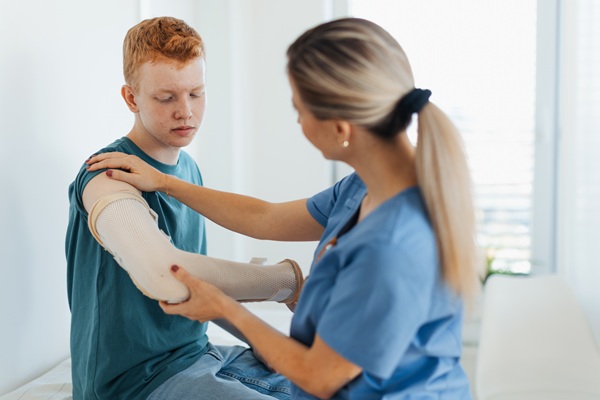Shoulder Injury TreatmentNewport Beach, CA
Shoulder injuries include a wide range of types and causes due to the various parts of the shoulder joint. Treatment for shoulder pain or injury largely depends on the type and cause along with the patient’s individual anatomy, tolerance level, and preference. It is important for everyone to take care of their joints, and one of the most commonly injured parts of the body is the shoulder.
At Orange County Physical Therapy, we offer treatments for patients experiencing shoulder pain and other associated symptoms following a shoulder injury. Our team can help determine the cause and severity of the injury as well as create a custom treatment plan that fits the patient’s schedule. To learn more about a procedure or schedule an appointment, call (949) 299-0297 today.
Understanding Shoulder Pain
Shoulder pain refers to pain stemming from in or around the shoulder joint. The shoulder consists of three bones: the upper arm bone (humerus), the shoulder blade (scapula), and the collarbone (clavicle). The upper arm bone lies inside a rounded socket, called the glenoid, in the shoulder blade. The rotator cuff has four muscles and tendons, holding the arm in place and residing in the shoulder socket.
There are a number of common causes of shoulder injuries that everyone should keep in mind. One of the most common causes of shoulder injuries is overuse. This is common in individuals who participate in sports that involve repetitive overhead motion. Two of the most common examples include baseball and swimming. Those who spend excessive hours training can develop pain, weakness, and inflammation throughout the joint.
Check out what others are saying about our Shoulder Injury Treatment services on Yelp: Shoulder Injury Treatment Newport Beach
Types and Causes of Shoulder Injuries
There are several types of shoulder injuries, including bursitis, tendinitis, tendon tears, impingement, instability, arthritis, and fractures.
- Bursitis: occurs from excessive use of the shoulders that results in inflammation and swelling of the bursa.
- Tendinitis: refers to acute or chronic inflammation of the tendons. Injuries and degenerative changes in the tendons can result in the splitting or tearing of the tendons.
- Shoulder impingement: occurs when the top part of the shoulder joint rubs onto the lower part.
- Shoulder instability: also called dislocation, refers to when the head of the upper arm leaves the socket.
- Arthritis in the shoulder: most often occurs due to wear and tear of the upper arm or shoulder or from an injury.
- Fracture: refer to a broken clavicle, humerus, or scapula.
Sometimes, people develop pain in their shoulder due to something called a pinched nerve. This happens when the shoulder joint becomes inflamed and starts to pinch the nerve as it passes through the shoulder joint. A pinched nerve may cause someone to develop shooting pains that travel down the arm, similar to an electric shock.
Diagnosing Shoulder Pain
To properly diagnose shoulder pain, a physician may conduct a physical examination and run imaging tests, such as an X-ray and MRI. In most cases, the patient is referred to a physical therapist. We will then undergo a physical examination and go over imaging tests and medical history. We typically examine the patient on their first visit to help speed up the treatment process.
We will first take a look at the shoulder or shoulders causing pain, examine the imaging tests, and ask the patient a series of questions. It is important to try and remember the source of the pain, when it started, and how often or when the pain feels the worst. We will try to move the arm around and determine the shoulder’s range of motion. After establishing the likely cause, we will discuss the patient’s treatment options and curate a customized treatment plan.
Treatments for Shoulder Injuries
There are a variety of physical therapy treatments available for shoulder injuries depending on the type and cause of the injury. The most common type of shoulder injury involves the rotary cuff, which can affect a person’s range of motion and causes tremendous pain. No matter the injury type, we will curate a treatment plan with customized exercises and activities that target specific muscles affected by the injury.
An exercise conditioning program consisting of various shoulder exercises can help improve strength and flexibility while also reducing pain. The muscles targeted in treating any shoulder injury include:
- Deltoids (front, back and over the shoulder)
- Trapezius muscles (upper back)
- Rhomboid muscles (upper back)
- Teres muscles (supporting the shoulder joint)
- Supraspinatus (supporting the shoulder joint)
- Infraspinatus (supporting the shoulder joint)
- Subscapularis (front of shoulder)
- Biceps (front of upper arm)
- Triceps (back of upper arm)
Treatment times will vary from patient to patient, but most treatment programs take from four to six weeks. Upon recovery, we recommend patients continue their exercises at home at least twice a week to maintain strength and range of motion. We will discuss post-treatment recovery and maintenance at the end of the patient’s treatment and schedule any follow-up visits as needed.
Benefits of Physical Therapy for a Shoulder Injury
Physical therapy intends to strengthen the muscles associated with an injury as well as the surrounding muscles. A physical therapist receives the professional training to learn how to help improve post-injury and post-surgical outcomes by addressing pain, scar tissue, strength, range of motion, and flexibility. Therefore, physical therapy treats the symptoms and reduces pain while also helping patients learn to manage their condition and maintain a healthy, active body.
A major benefit of physical therapy for shoulder pain and injury is the focus on strengthening and conditioning as opposed to using temporary pain relief medications. While many patients require medication for pain, it is important to rehabilitate the shoulder and condition it so that it can regain its full function. Physical therapy can also greatly reduce a patient’s need for surgery. Patients who undergo physical therapy post-surgery have faster recovery times and overall better outcomes in the long run.
Schedule a Visit Today
Shoulder injury consultations and treatments are available at our office. The Orange County Physical Therapy team looks forward to treating you and helping you along your road to recovery. Call our office at (949) 299-0297 to learn more or schedule an appointment.
Frequently Asked Questions About Shoulder Injury Treatment
Q. What are the most common causes of a shoulder injury?
A. Shoulder pain generally occurs due to an injury, damage, wear-and-tear, or degenerative disease. The main causes of shoulder pain are bursitis, tendinitis, tendon tears, impingement, instability or dislocation, arthritis, and fractures. Properly diagnosing the cause of the pain helps determine the best course of treatment.
Q. What is the average treatment time for a shoulder injury?
A. The duration and number of sessions largely depend on the type of treatment a patient undergoes. Minor shoulder pain can generally be treated with over-the-counter medications, cold compresses, and light exercises. However, more serious conditions can take eight weeks or longer to fully heal. This will be discussed upon initial diagnosis.
Q. What over-the-counter medications can I take for shoulder pain?
A. Nonsteroidal anti-inflammatory drugs (NSAIDs) help relieve pain and reduce inflammation. Over-the-counter medications for pain relief include acetaminophen (Tylenol), ibuprofen (Advil, Motrin), and naproxen (Aleve). We recommend using an ice pack as well to relieve tense muscles.
Q. What symptoms appear when the shoulder has been injured?
A. Symptoms of a shoulder injury differ depending on the type of condition a patient has. Common symptoms of a shoulder injury include pain, sensitivity, discomfort, and reduced range of motion. It is important to seek medical attention if you are experiencing immobility in the shoulder, a shoulder joint that looks deformed, intense pain, a swollen or inflamed shoulder, or weak or numb arms and hands.
Q. When is physical therapy recommended for shoulder pain?
A. A primary care physician may recommend physical therapy for patients experiencing pain or discomfort when moving their shoulder. It is highly recommended and often required after shoulder surgery. Nonetheless, patients can also seek physical therapy when experiencing shoulder pain to prevent any complications in the future.
Contact Us
Orange County Physical Therapy OCPT is located at 2135 Westcliff Dr. Suite 203 Newport Beach, CA 92660.





